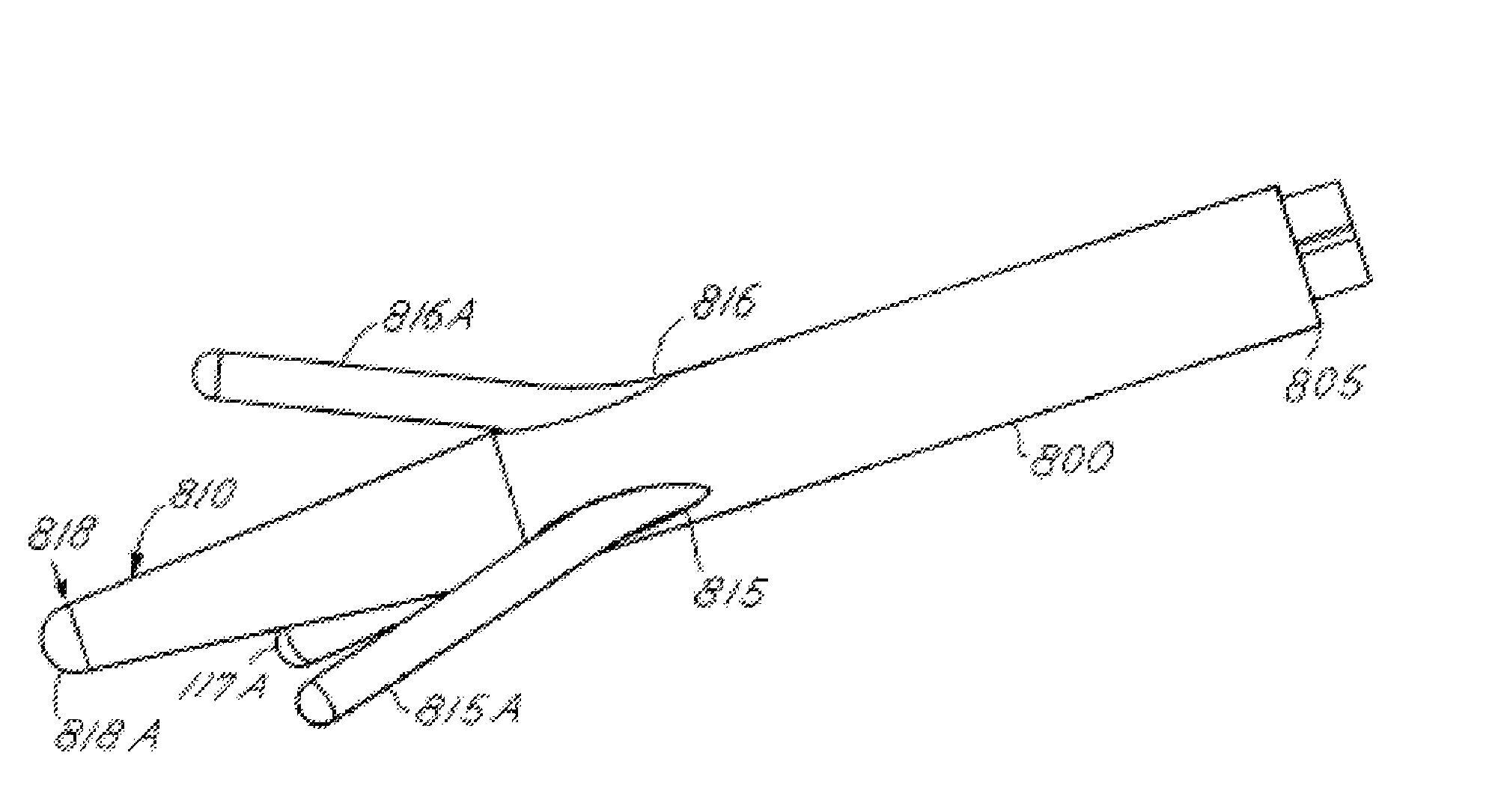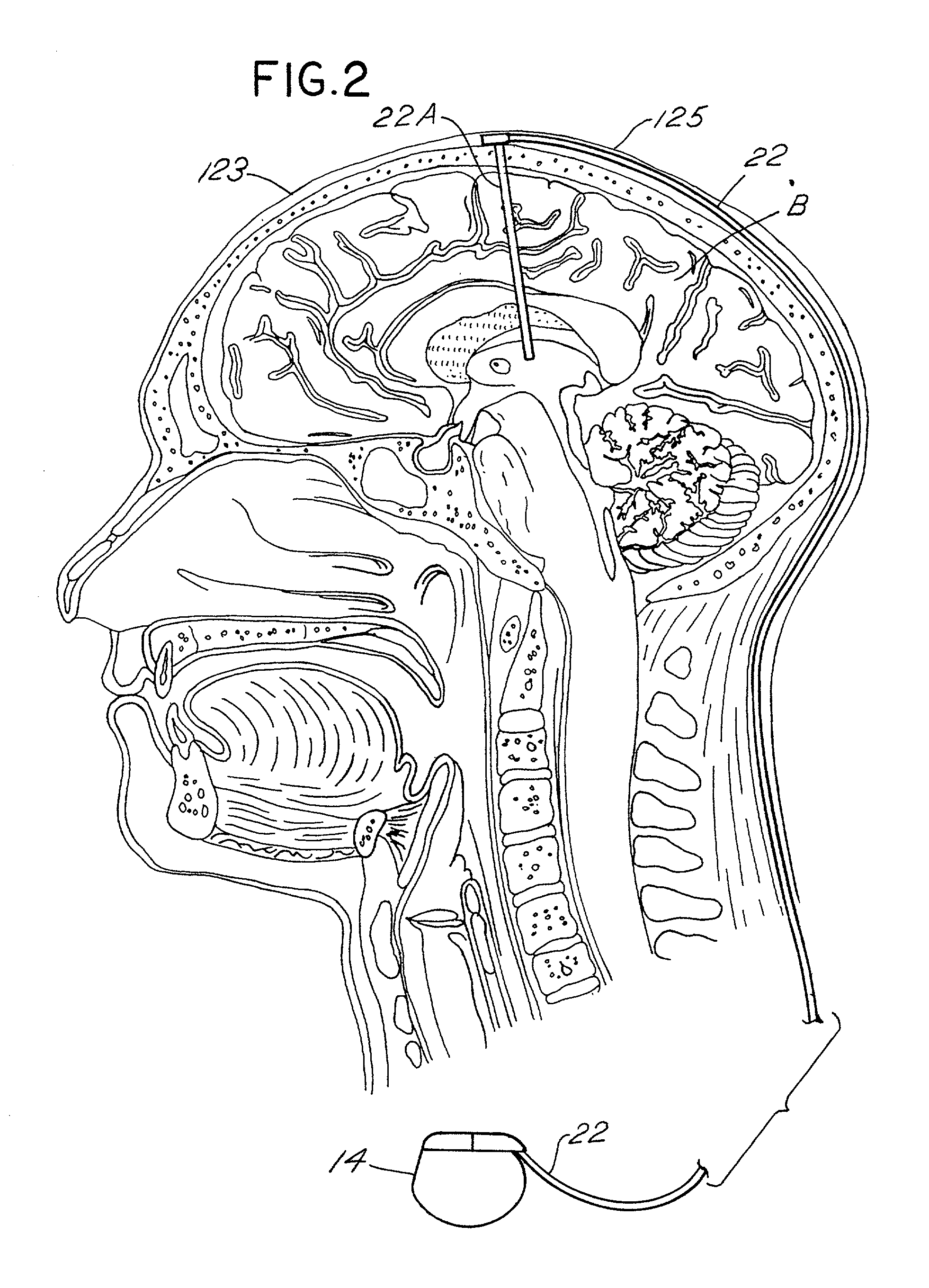Techniques for selective activation of neurons in the brain, spinal cord parenchyma or peripheral nerve
a technology of peripheral nerves and brain neurons, applied in the field of neural tissue treatment, can solve the problems of increasing the risk of surgery, requiring a lot of time and effort to focus stimulation, and directing electrical energy to stimulate undesired parts of the brain or spinal cord. , to achieve the effect of reducing the inherent risk of surgery
- Summary
- Abstract
- Description
- Claims
- Application Information
AI Technical Summary
Benefits of technology
Problems solved by technology
Method used
Image
Examples
Embodiment Construction
[0033]FIG. 1 is a schematic view of a patient 10 having an implant of a neurological stimulation system employing a preferred form of the present invention to stimulate the subthalamic nucleus of the patient. The preferred system employs an implantable therapy delivery device or a pulse generator 14 to produce a number of independent stimulation pulses which are sent to a region of the brain parenchyma such as the subthalamic nucleus by insulated leads coupled to therapy delivery devices or electrodes 16A-18A (FIG. 3). Each lead is inserted within cannula 22A. Alternatively, two or more electrodes 16A-18A may be attached to separate conductors included within a single lead. FIG. 2 is a cross section of brain B showing implantation of cannula 22A within the brain. The specific locations within the brain are discussed in further detail herein.
[0034]Device 14 is implanted in a human body 120 in the location shown in FIG. 1. Body 120 includes arms 122 and 123. Alternatively, device 14 m...
PUM
 Login to View More
Login to View More Abstract
Description
Claims
Application Information
 Login to View More
Login to View More - R&D
- Intellectual Property
- Life Sciences
- Materials
- Tech Scout
- Unparalleled Data Quality
- Higher Quality Content
- 60% Fewer Hallucinations
Browse by: Latest US Patents, China's latest patents, Technical Efficacy Thesaurus, Application Domain, Technology Topic, Popular Technical Reports.
© 2025 PatSnap. All rights reserved.Legal|Privacy policy|Modern Slavery Act Transparency Statement|Sitemap|About US| Contact US: help@patsnap.com



